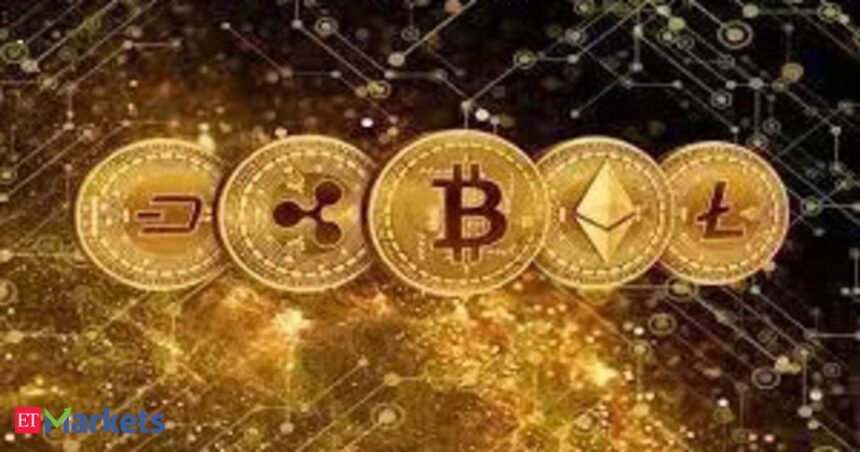Tailored for punters with the stomach to absorb losses in a market that can suddenly and dramatically turn volatile after a long lull, it’s an offering that is neither aggressively marketed nor formally launched by mainline platforms.
In fact, in a departure from the loud advertisements seen at the peak of the crypto craze two years ago, these handful of service providers prefer playing down crypto futures – offering it to select clients, with one of the platforms describing the rollout as a pilot project in “beta phase”.
However, trade and crypto industry circles told ET that quite a few high-net-worth individual (HNI) investors who understand the pitfalls of the trade, are betting on ‘perps’ – or perpetual cryptocurrency futures which, unlike the more familiar stock or commodity futures, have no expiry date. While the platforms concerned display the perp window on their apps and sites, spell out the basic product features, and the caveats, the trade volumes are not disclosed.
The perp story is playing out at a point when a chunk of the crypto crowd in the country has either left the market or moved their positions in wallets with offshore bourses like Binance following high taxes in India and reluctance of several high street banks to process payments for crypto trades.

In a futures trade, a trader can take position on a significant amount of assets by chipping in a small amount of money known as ‘margin’. Since a futures is a financial contract between the trader and the exchange, where the former takes a bet on the price of the underlying cryptocurrency (say, Bitcoin) without actually buying or selling the coins, traders believe that futures are spared of the 1% TDS that is applicable on regular or spot VDA trades.
“These are still untested waters. Futures trading in cryptos being separate contracts, one may be able to take a position that such future contracts are not ‘virtual digital asset’ as defined under the Income Tax Act,” said Ashish Mehta, partner at the law firm Khaitan & Co. “A corollary to such a position will be that TDS @1% prescribed on transfers as well as limitations on claim of deductions / losses set off as applicable to virtual digital asset may not apply,” said Mehta.Under the law, the buyer of VDA deducts 1% TDS before paying the seller. The seller pays regular tax of 30% tax (depending on the tax bracket) on the gains which is treated as business income. More significantly, the gains of one trade cannot be offset against loss in another crypto trade to lower the tax outgo. Thus, perp traders believe that since futures don’t attract TDS, profits from such trades can be set off against losses from similar trades.
In perp trades, the margin is paid not in cash but in USDT – a type of cryptocurrency better known as ‘stable coin’. So, 1% TDS is deducted when a perp trader buys USDT that would be used as futures margin. Here, the leverage can go up to 20, thereby allowing a trader to take a position that is 20 times the margin value.
The platforms do spell out the underlying risks. For instance, in one of the platforms, a trader chosen for perps and agreeing to step into world of perps has to click on ‘I understand/agree’ to the explicit warning that such trades involve a high degree of risk with the potential for great profits and losses. “Please be aware that in the event of extreme price movement, there is a chance that all your locked balance many be liquidated. Before deciding to participate in the crypto futures market, we advise you to carefully consider your investment objectives, level of experience and risk appetite.”
According to Vikram Subbura, CEO of Giottus (a crypto exchange which is not offering futures), “Futures are an option that is favoured among few Indians, considering that the liquidity in the international platforms have grown considerably over the years.
Futures are lucrative for people who are willing to bet further in the crypto market and understand the risk of losing the complete margin money when the market goes against them.”
Some of the overseas exchanges, which have become a playground for many Indian and NRI crypto traders, allow a higher level of leverage.
“The local platforms are sourcing the liquidity and borrowing the prices quoted in from Binance. If the local market has enough liquidity, then buyer and seller (of perps) can be matched. If it doesn’t, the platform here can probably act as an intermediary, carry out a mirror trade on Binance using its omnibus account there. It can even transfer the USDT given as margin to Binance using the Blockchain. It’s still a nascent market and the details are not available as the volumes are not published,”








